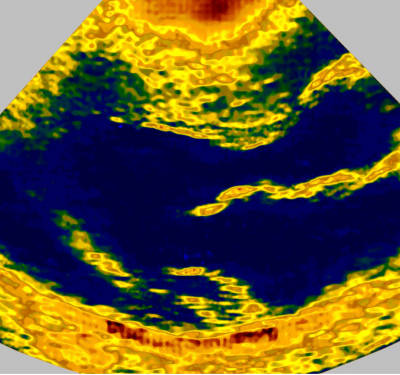Aorta deformation linked to heart disease
Researchers find link between abnormal mechanics of the aorta and an often undiagnosed cardiovascular disease.
Published online 28 June 2015

Abonrmal mechanics of the aorta may be a risk factor to development of hypertrophic cardiomyopathy.
© BSIP SA / Alamy
A cardiovascular condition called hypertrophic cardiomyopathy is associated with abnormal mechanical properties of the aorta, which could be used in the clinic to assess risk for the disease, according to new research published in the journal Global Cardiology and Practice1.
Hypertrophic cardiomyopathy (HCM) is a hereditary disease that affects approximately one in 500 people, and is characterized by abnormal thickening and stiffening of the heart’s muscular wall. Normally this stiffening is associated with increased morbidity in patients with hypertension, diabetes, and end-stage kidney disease, but whether this is also true of HCM is still not clear.
Hala Mahfouz Badran of Menoufiya University, Egypt, and her colleagues recruited 141 HCM patients, aged 5–62 years old and without other cardiovascular risk factors, and 66 age- and sex-matched healthy controls. They used echocardiography, blood pressure measurements, and pulsed wave Doppler tissue imaging (DTI) to calculate pulse pressure and heart muscle deformation, along with the strain, stiffness and distension of the aorta during the cardiac cycle.
They found that the mechanics of the aorta were altered, with the pulsatile change in aortic diameter, distention and elasticity of the aortic walls being significantly decreased, and aortic stiffness significantly increased, in HCM patients compared to the controls. Confirming earlier reports, the researchers also found that aortic stiffness was higher in older patients.
The study is one of the first to demonstrate abnormal mechanics of the aorta in HCM patients. But it failed to find any significant relationship between aortic stiffness and mechanics of the left ventricle, and so, in this group of patients at least, the stiffening appears to be a co-existing condition, and the precise origin of their cardiac dysfunction is still not clear.
Impaired vascular function may therefore be a clinical risk parameter in HCM, but comprehensive longitudinal studies will first be needed to confirm this.
Reference
Badran, H. M., Soltan, G., Faheem, N., Elnoamany, M. F., Tawfik, M. & Yacoub, M. Aortic biomechanics in hypertrophic cardiomyopathy. Glob. Cardiol. Sci. Pract. 2015, 27 (2015). | article
DOI: 10.1038/qsh.2015.68

